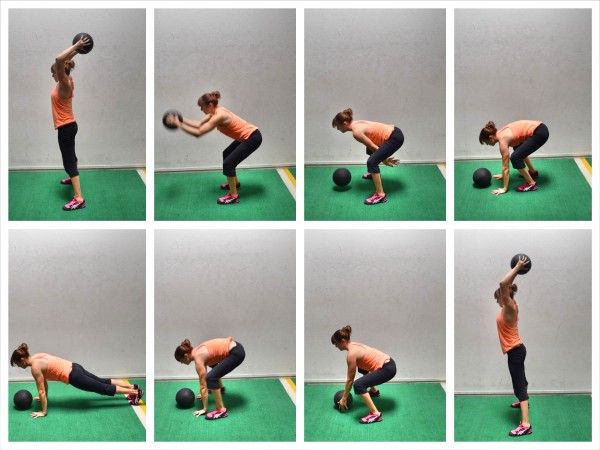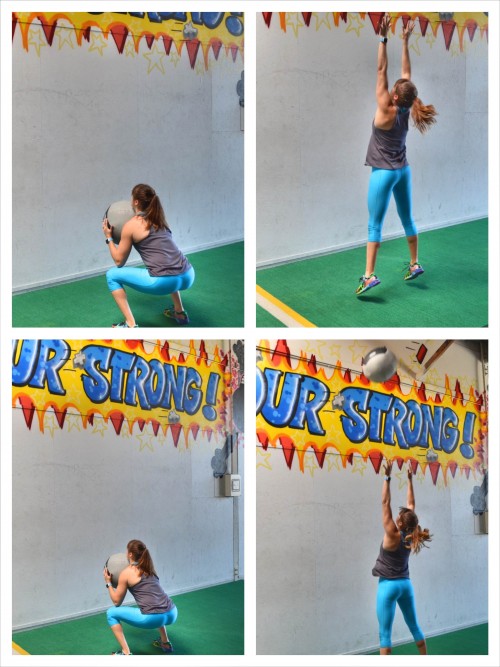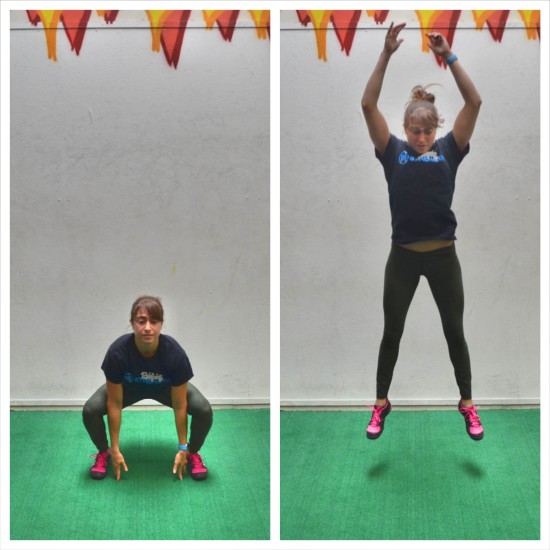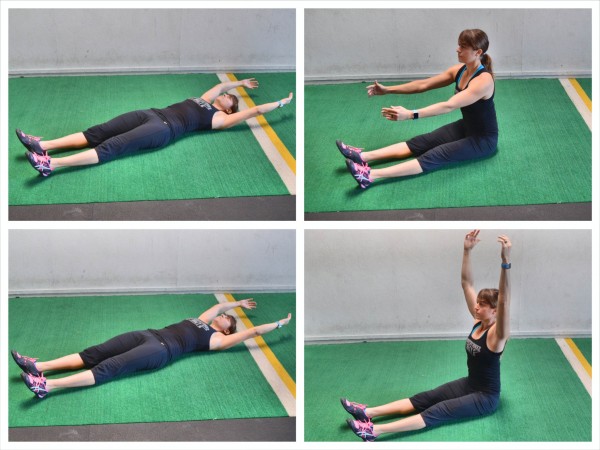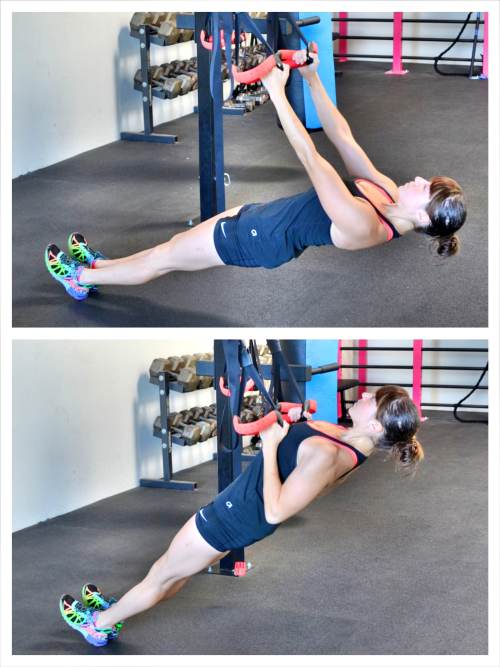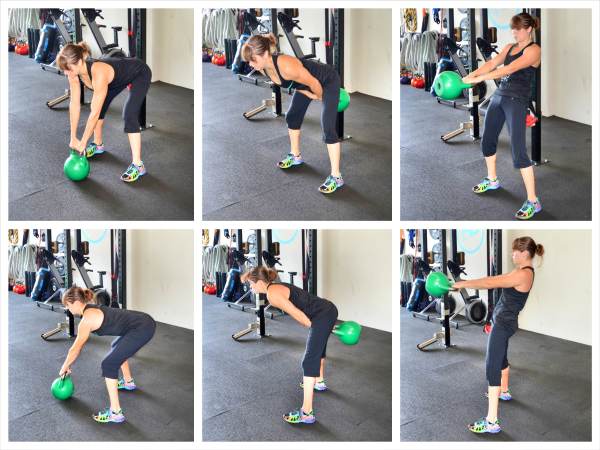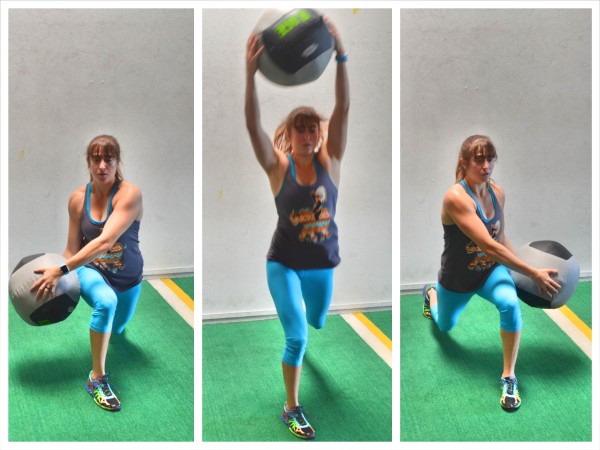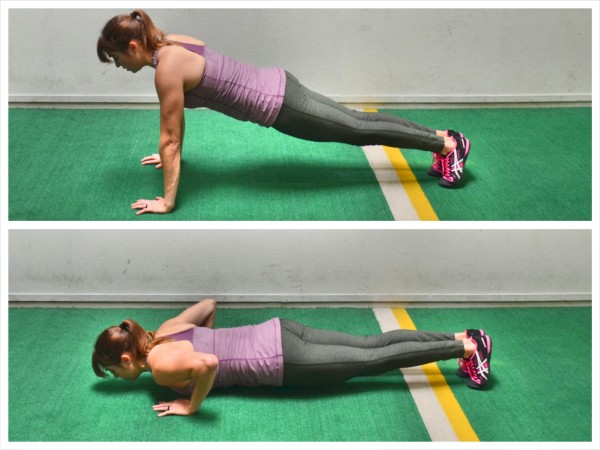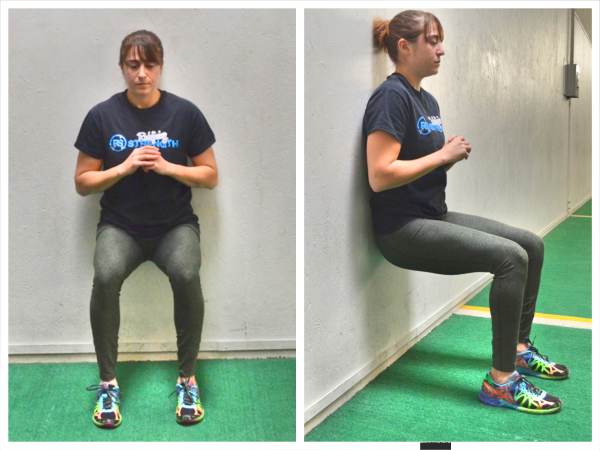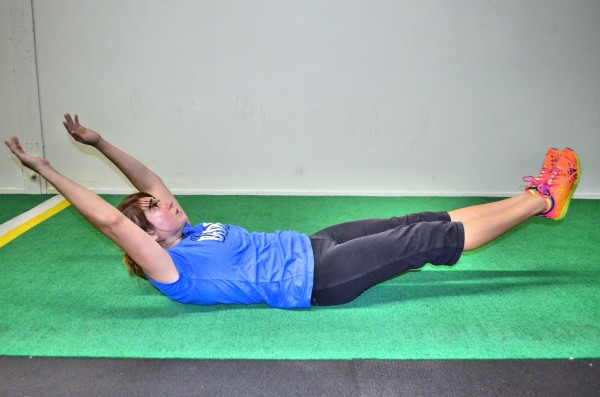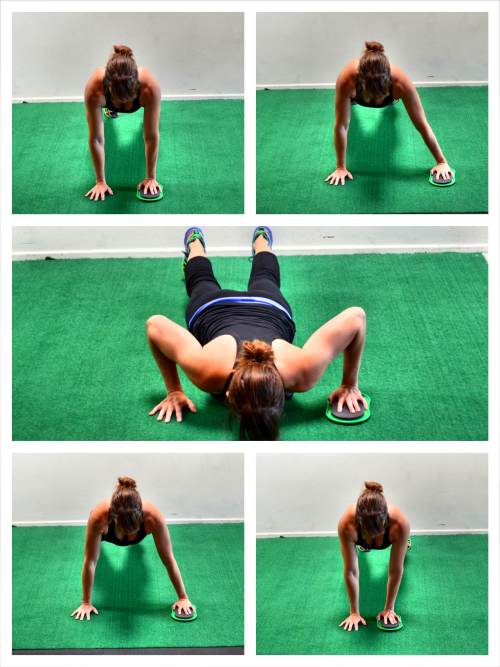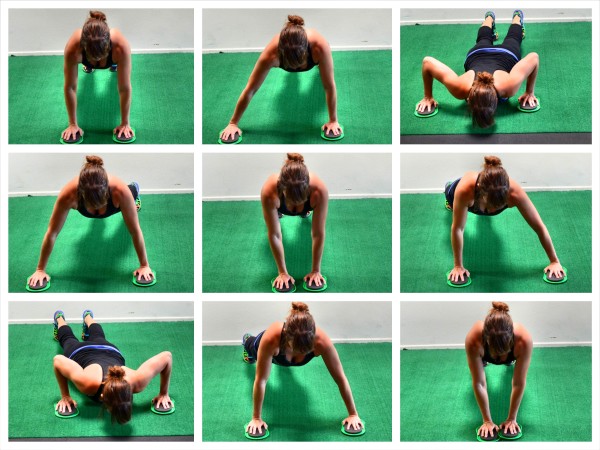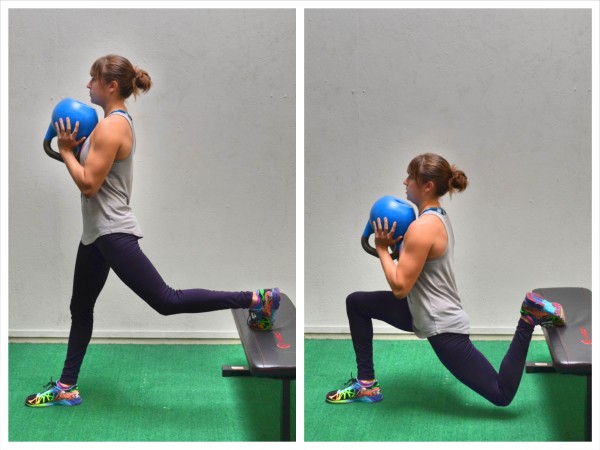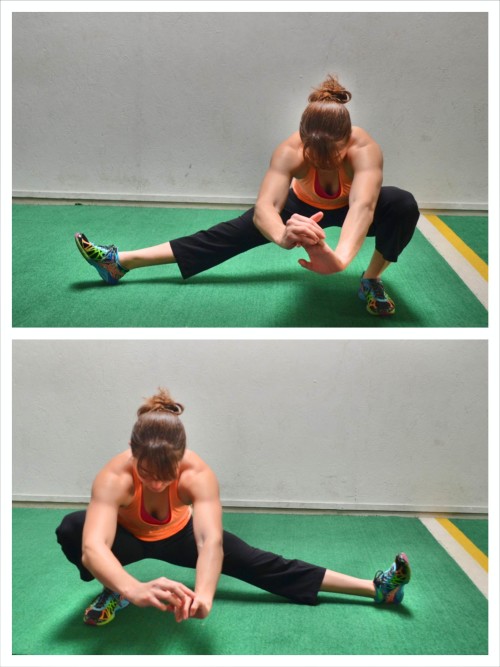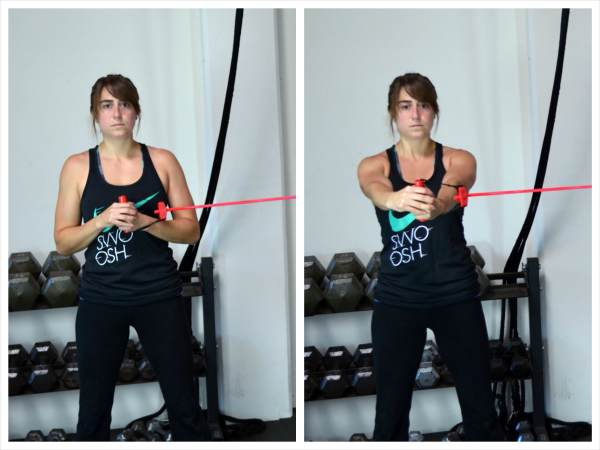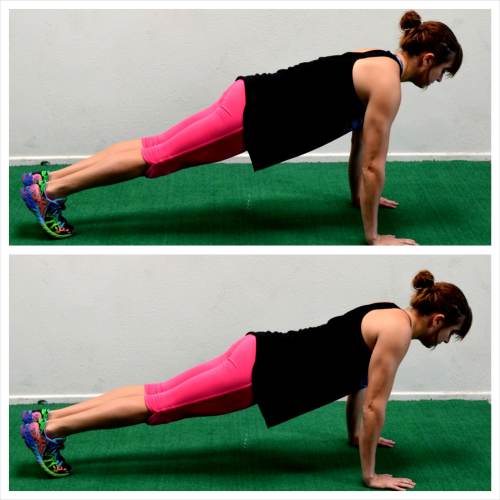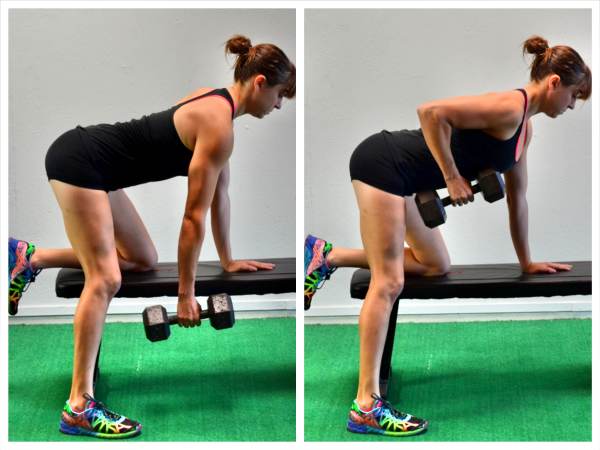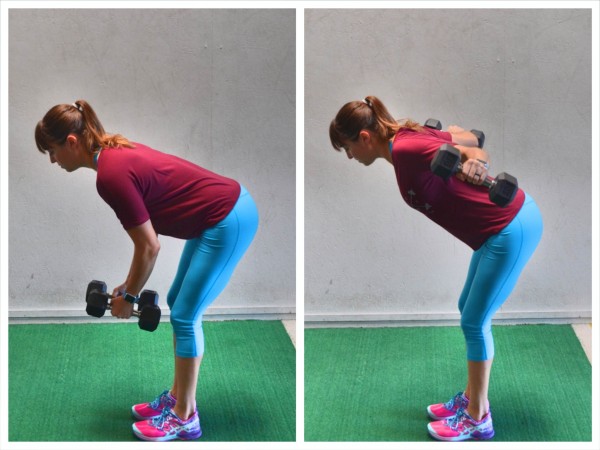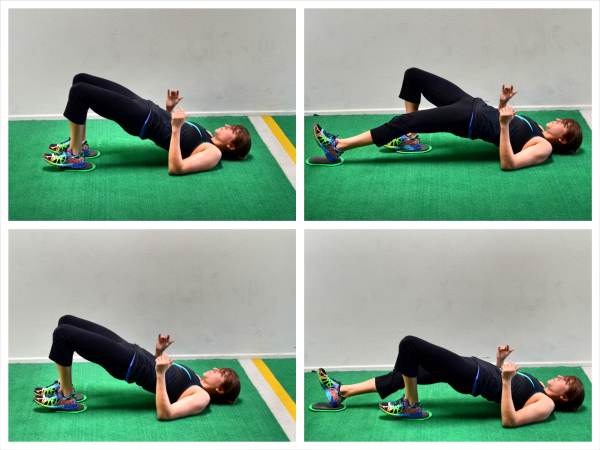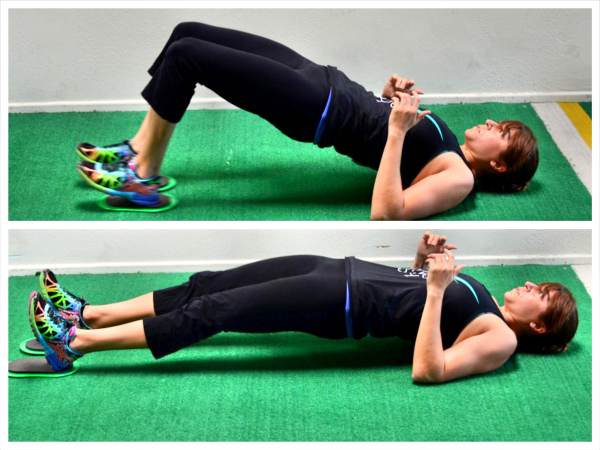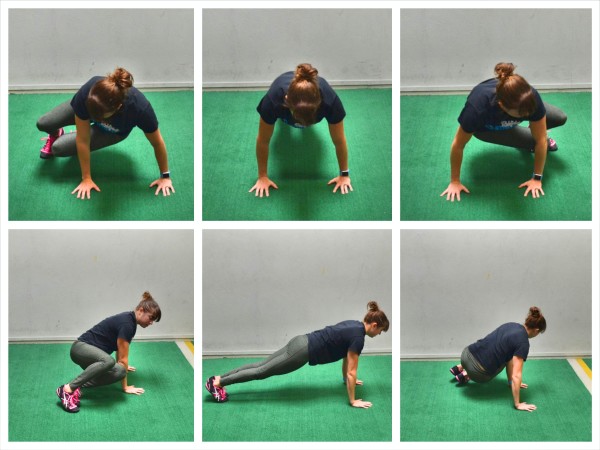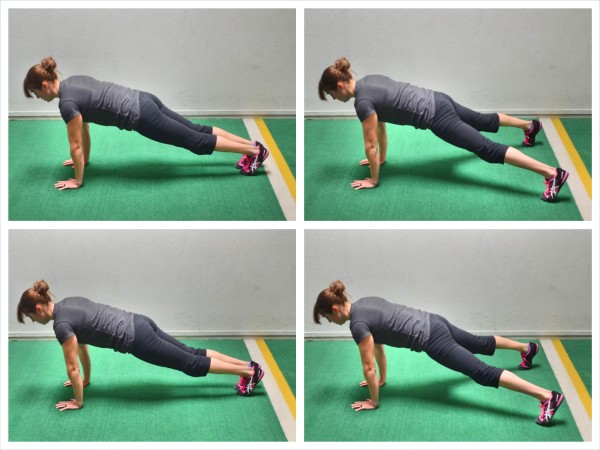
The Cardio Kick Start Workout
WARM UP
Roll Out
5-8 reps per side World’s Greatest Stretch
WORKOUT
Complete 5-8 rounds of the following circuit. Rest 30 seconds between exercises and between rounds. Beginners may need to rest 1 minute between rounds. Do not rest during the 30 seconds of work. Regress movements if needed but keep moving!
CIRCUIT:
30 seconds Bulldog Burpees
30 seconds Rest
30 seconds Alternating Side Lunges with Hop
30 seconds Rest
30 seconds T Push Ups
30 seconds Rest
30 seconds Plank Jacks
30 seconds Rest
30 seconds Cherry Bombs
30 seconds Rest
COOL DOWN
Stretch and Roll Out:
Calves
Hamstrings
Quads
Hips/Glutes
Chest
Back
NOTES:
Do not rest during the 30 seconds of work. Rest more between rounds if needed or regress the movements, but do not rest during the 30 seconds. If you rest, you won’t get as much out of the workout. Keep moving!
This is a workout from our 21-Day Kick Start, which you can learn more about here.
EXERCISE DESCRIPTIONS:
World’s Greatest Stretch – To do the World’s Greatest Stretch: 1. Start in a high plank position with your hands under your shoulders and feet together. Your body should start in a nice straight line from your head to your heels. Do not let your hips sag or your butt go up in the air. 2. Step your right foot outside your right hand so that you are in a nice low runner’s lunge. Make sure your foot is flat on the ground. (If you are less flexible, your foot may not be right outside your hand or you may need to drop your back knee down to the ground. But do not let your front heel come up. You still want your foot to be flat on the ground.) 3. In the low runner’s lunge, drop your right elbow down to the ground near the instep of your right foot. Do not worry if you can’t touch the ground. Just drop your elbow down as low as you can. Feel a nice stretch in your hip and glute. 4. Then bring your elbow up off the ground and rotate your right arm up toward the ceiling, opening your chest up toward the ceiling to face your right leg. Stretch your right arm up toward the ceiling and rotate your chest open to feel a nice stretch in your hips, glute, back and chest. 5. Bring the right hand back down to the ground and then drop your back knee (left knee) down to the ground. Sit back on your left heel and let your right leg straighten out in front of you. Feel a stretch down your right hamstring. Lean forward over that front leg to increase the stretch. You may even feel this stretch your low back a bit. Make sure though that you are pushing your butt back as you hinge and lean from the hips and don’t simply round over. 6. Then shift back forward into the low runner’s lunge, bending your right leg and lifting your left knee up off the ground. 7. You can then repeat the stretch on the same side or step your right foot back into the plank position and step your left foot up outside your left hand to stretch the other side. Take your time at each step to feel the stretch working. Spend a little more time on pieces of the stretch that you really feel hitting your tight spots!
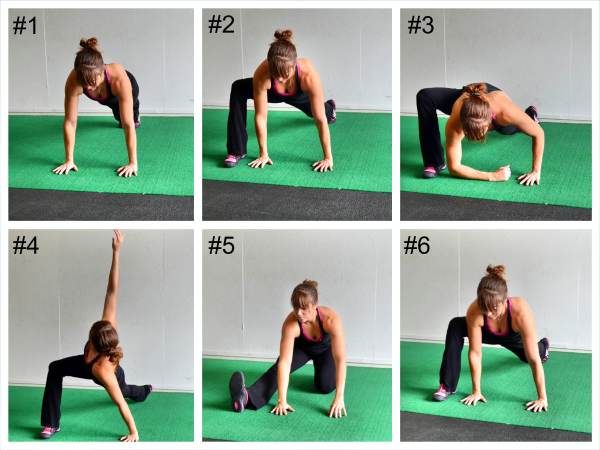
Bulldog Burpees – To do the Bull Dog Burpee, start standing with your feet together. Then squat down and place your hands down on the ground. With your hands down on the ground just in front of your feet, jump your feet back into the Bull Dog position. Jump your feet back so that your knees are an inch off the ground and about under your hips while your hands are about under your shoulders. Do not let your butt go up in the air or your low back arch. Keep your back flat in this position. Then jump your feet back in and slightly outside your hands. Lift your hands up off the ground and jump up as high as you can before squatting back down and placing your hands back on the ground to jump back into the Bull Dog position and repeat the Burpee.
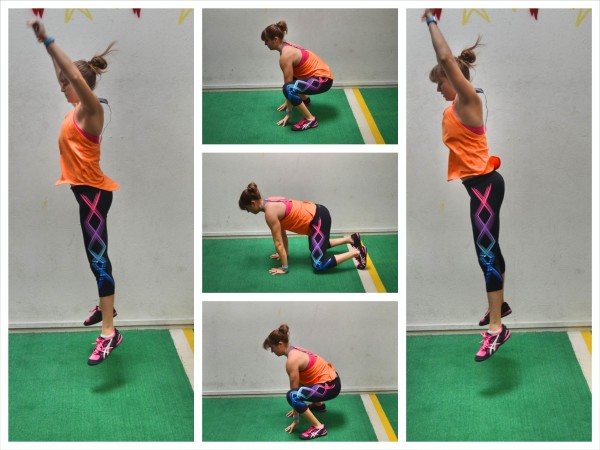
Alternating Side Lunges with Hop – To do the Alternating Side Lunges with Hop, stand tall with your feet together. Step one foot out to the side nice and wide. Bend the knee of the leg you stepped out to the side with, keeping the other leg straight, and sit your butt back to sink into the side lunge. Don’t be afraid to slightly lean forward as you hinge at the hips to sink your butt. Keep your back flat as you sit back. Then drive back up off your outside foot to come back to standing. Do not bend the other leg as you push off to come back up to standing. When you come back to standing, jump up toward the ceiling, reaching up overhead. Then lunge out to the other side before coming back center and jumping toward the ceiling. Keep alternating lunges until all reps are complete. Make sure your heels stay down as you lunge out to the side. You want to make sure to sit your butt back and load your glutes.

T Push Ups – To do the T Push Up, start at the top of a Push Up from your knees (beginner) or toes (advanced). Your legs should be close together and your hands should be under your shoulders and outside your chest. Brace your abs and engage your glutes and quads as you drive back through your heels to make sure your body is in a nice straight line. Then drop your chest to the ground between your hands to perform a push up. Keep your body in a nice straight line. Do not let your hips sag or your butt go up in the air. Also, make sure your elbows do not flare up by your shoulders. Press back up to the top of the push up, moving as one unit, then lift one hand and rotate open into a side arm balance or side plank. Pivot your feet to rock onto the outsides of your feet as you reach your top hand up toward the ceiling and rotate your body open. Do not let your shoulder shrug as you do this. Pause for a second, then rotate the hand back down and the feet back forward. Perform another push up and then a side arm balance on the other side. Keep alternating side arm balances after each push up. Beginners can do the movement from their knees or lift up onto their toes after the push up for the balance. They can also do this move off an incline.
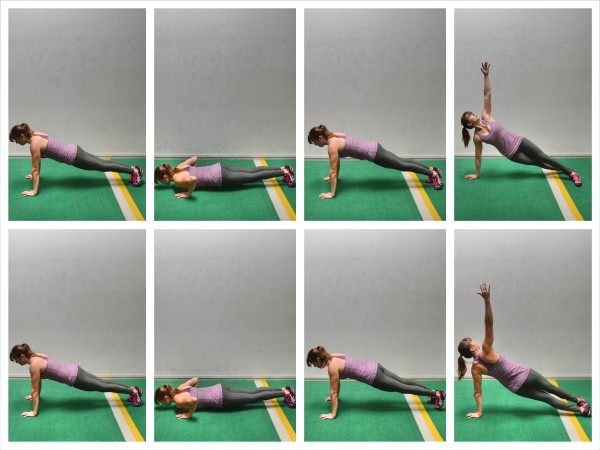
Plank Jacks – To do Plank Jacks, start at the top of a push up with your hands under your shoulders and your feet together. Your body should be in a nice straight line from your head to your heels. Brace your abs then jump your feet out wide to each side as if doing a Jumping Jack. As you jump, do not let your butt go way up in the air or your hips sag way down toward the ground. Quickly jump your feet back in together, holding the nice plank position. Do not shrug your shoulders or bend your arms as you go. Also, do not let your hands move forward in front of your shoulders. Repeat, jumping them back out. Keep your core engaged as you jump your feet in and out. Do not let your butt go up in the air or your hips sag as you jump your feet out wide and then back together. Beginners may need to start by stepping one foot at a time out wide and then back together. You can also add some variety to this move and make it more challenging for your inner thighs by doing it with sliders or towels under your feet.

Cherry Bombs – To do Cherry Bombs, start seated on the ground with your knees slightly bent and feet flat on the ground. Then lift your heels up off the ground and slightly rock back so that you are balanced on your butt. Draw your knees in toward your chest and wrap your arms around your shins. Then open up, lying back on the ground without fully relax down and open. Keep your abs engaged and your shoulder blades slightly up off the ground as you open your arms up and out overhead. Also, keep your legs off the ground as you straighten them out and open them up wide. You should almost look like a big X on the ground with arms and legs out and open and your low back pressed against the ground. Feel your glutes work to open your legs out wide as your abs are braced to prevent your low back from coming up off the ground. Then come back to seated, drawing your knees back in as you wrap your arms around your shins. Try to keep your feet up off the ground the entire time. Repeat, opening back up without completely relaxing back onto the ground. Beginners may need to do the tuck without the full range of motion. They may need to perform more of a crunch instead of coming all the way up to balanced on their butt. To make the move harder, open your legs up while keeping them as close to the ground as possible. Kick them up and out wider higher off the ground to make the move easier.


